Long-duration M9.4 solar flare erupts from Region 3615
A long-duration solar flare measuring M9.4 erupted from Active Region 3615 (beta-gamma-delta) at 21:16 UTC on March 30, 2024. The event started at 21:01 and ended at 22:15 UTC.
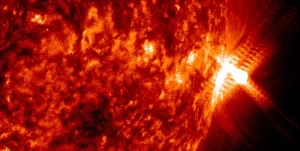
A long-duration solar flare measuring M9.4 erupted from Active Region 3615 (beta-gamma-delta) at 21:16 UTC on March 30, 2024. The event started at 21:01 and ended at 22:15 UTC.
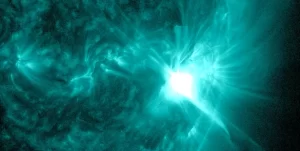
A strong X1.1 solar flare erupted from Active Region 3615 at 20:56 UTC on March 28, 2024. The event started at 20:50 and ended at 21:01 UTC.
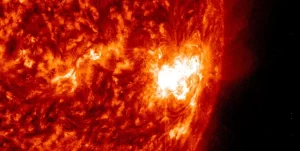
A strong solar flare measuring M6.1 erupted from Active Region 3615 (beta-gamma-delta) at 15:56 UTC on March 28, 2024. The event started at 15:40 and ended at 16:03 UTC. This is the second M6+ solar flare of the day after M7.1 at 06:29 UTC.
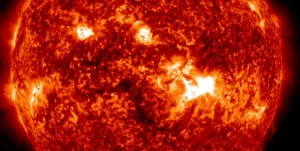
A moderately strong M6.5 solar flare erupted from Active Region 3576 at 03:48 UTC on February 12, 2024. The event started at 03:23 and ended at 03:53 UTC.
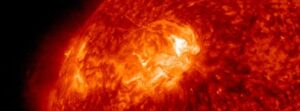
A strong solar flare measuring M9.6 at its peak erupted…
A major, long-duration solar flare measuring X1.0 at its peak erupted from geoeffective Active Region 2887 at 15:35 UTC on October 28, 2021. The event started at 15:17 and ended at 15:48 UTC. The event was associated with a Type II Radio Emission with an estimated…
A weak solar flare measuring B1.2 at its peak erupted on August 16, 2020, producing a coronal mass ejection (CME). Consensus model results suggest an arriving glancing blow on August 20 — producing unsettled to active geomagnetic field conditions, with a chance for…
A long-duration solar flare measuring C1.3 at its peak erupted from Region 2734 (Alpha) at 03:19 UTC on March 8, 2019. The event started at 03:07, peaked at 03:19 and ended at 03:58 UTC. This event was associated with a Type II Radio Emission registered at 03:15 UTC…
A weak solar flare measuring C5.0 at its peak erupted from Active Region 2733 at 13:22 UTC on January 26, 2019. The eruption started at 13:12 and ended at 13:34 UTC. This was the strongest solar flare since February 18, 2018. It was preceded by B1.5 at 03:49 UTC,…
Scientists have made another step toward determining how solar flares accelerate charged particles like electrons and protons to speeds of almost the order of light. The new capabilities of the National Science Foundation's Karl G. Jansky Very Large Array (VLA)…